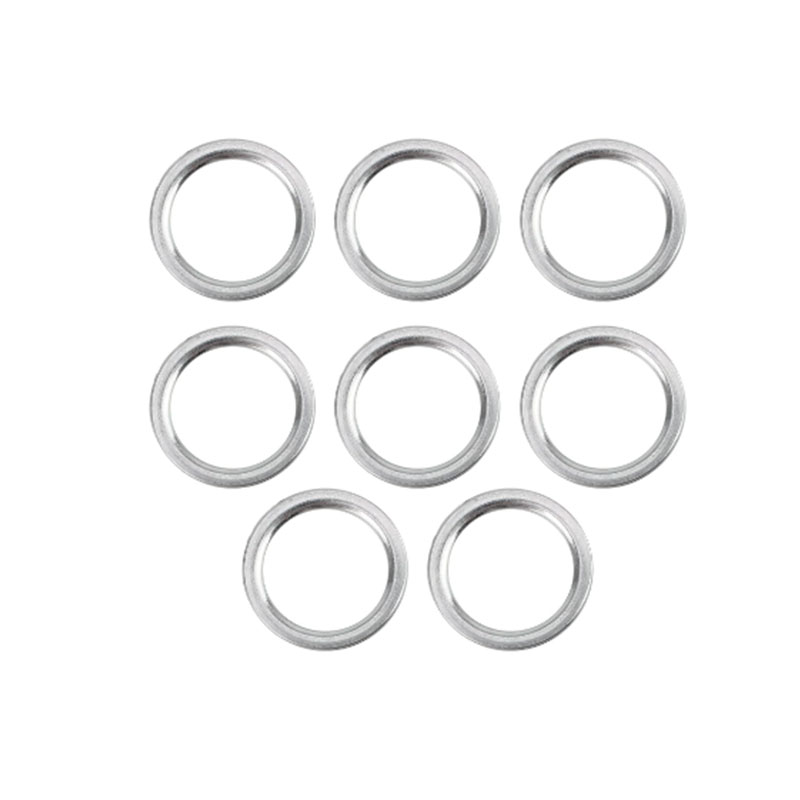o ring oil seal
Understanding O-Ring Oil Seals A Comprehensive Overview
O-ring oil seals are essential components in various mechanical systems, playing a crucial role in preventing fluid leakage and ensuring the efficient operation of machinery. These seals are circular rings made from elastomeric materials, designed to fit snugly in a groove and compress against a mating surface. Their simplicity belies their importance in diverse applications, from automotive engines to industrial machinery.
Function and Design
The primary function of an O-ring oil seal is to create a reliable barrier between different fluid compartments. When placed in a groove, the O-ring deforms upon assembly, creating a tight seal against the surfaces it contacts. This deformation is what allows O-rings to effectively prevent the escape of fluids, such as oil or other lubricants, which might otherwise lead to system failure. The design of O-ring seals is critical; they must not only withstand pressure but also cope with changes in temperature and exposure to various chemicals.
Material Selection
Choosing the right material for O-ring oil seals is vital, as different materials offer varying levels of resistance to heat, chemicals, and wear. Common materials include nitrile rubber (NBR), fluoroelastomers (FKM), and silicone rubber. Nitrile rubber, for example, is favored for oil resistance and is often used in automotive applications. In comparison, fluoroelastomers provide superior resistance to high temperatures and harsh chemicals, making them ideal for more demanding environments. Meanwhile, silicone O-rings boast excellent low-temperature performance but are less effective against certain oils.
o ring oil seal

Applications
O-ring oil seals are ubiquitous across many industries. In the automotive sector, they are found in engines, gearboxes, and hydraulic systems, where they seal oil passages and prevent leaks that could lead to engine damage or reduced efficiency. In aerospace, O-rings are used to seal fuel lines and hydraulic circuits, ensuring reliability in high-stress environments. Similarly, in manufacturing equipment, these seals help maintain hydraulic fluid integrity, minimizing downtime and maintenance costs.
Installation and Maintenance
Proper installation of O-ring oil seals is crucial to their effectiveness. Incorrect installation can lead to premature failure, resulting in leaks and increased maintenance costs. It is essential to ensure that the sealing surfaces are clean and free of debris, and that the O-ring is the correct size for the application. Regular inspections can also help identify wear or degradation, allowing for timely replacement before leaks occur.
Conclusion
In summary, O-ring oil seals are vital components that contribute significantly to the reliability and efficiency of various mechanical systems. By understanding their function, material options, applications, and installation best practices, manufacturers and engineers can make informed decisions that enhance the performance and longevity of their machinery. As industries continue to evolve, the importance of these seals will only increase, making them a critical focus for ensuring operational success.
-
The Ultimate Guide to Car Repair Kits: Tools and Essentials Every Driver Should Own
News Aug.01,2025
-
The Complete Guide to Oil Pan Gaskets: Sealing Engine Leaks the Right Way
News Aug.01,2025
-
Preventing Oil Leaks: A Complete Guide to Oil Pan Gaskets and Drain Seals
News Aug.01,2025
-
Everything You Need to Know About Oil Pan Gaskets and Drain Plug Seals
News Aug.01,2025
-
Essential for Car Owners: How to Use a Car Repair Kit to Deal with Minor Breakdown
News Aug.01,2025
-
Comprehensive Guide to Engine Oil Sump Gaskets and Related Seals
News Aug.01,2025
-
The Ultimate Guide to Boat Propeller Bearings and Trailer Wheel Bearings
News Jul.31,2025
Products categories















